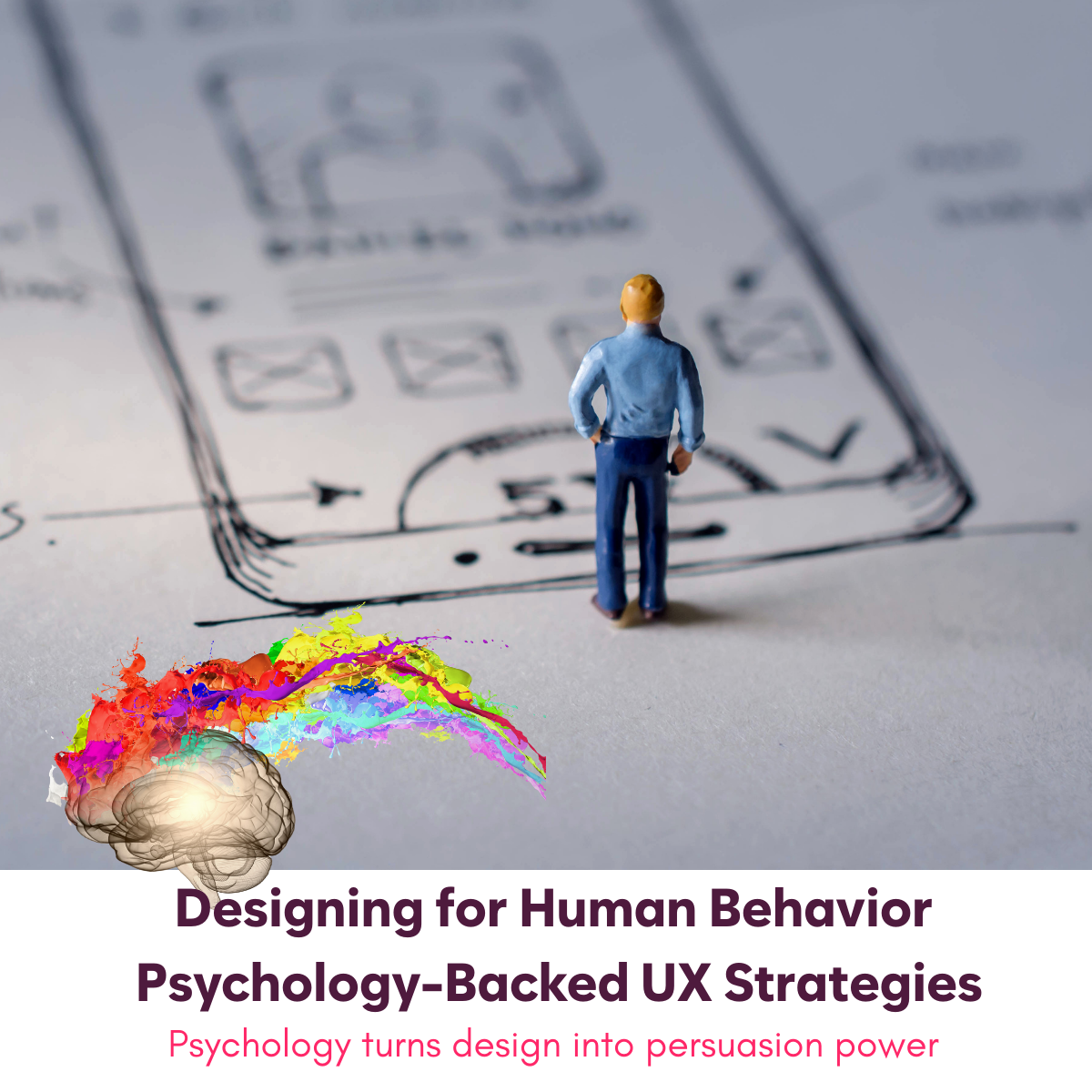Posted At: Aug 21, 2025 - 357 Views

In the digital world, great user experience (UX) design isn’t just about aesthetics or functionality — it’s about understanding people. Every click, scroll, and tap is influenced by human psychology. By tapping into psychological principles, designers can create experiences that feel intuitive, engaging, and effortless.
This blog explores how psychology informs UX design, key behavioral principles to consider, and practical ways to apply them in real-world projects.
Why Psychology Matters in UX
At its core, UX design is about solving problems for people. Psychology helps us:
- Predict how users will behave.
- Understand why they make certain decisions.
- Create designs that align with natural human tendencies.
When design aligns with how the brain processes information, users experience less friction, stay engaged longer, and are more likely to return.
Key Psychological Principles in UX Design
1. Hick’s Law – Simplifying Choices
Definition:The time it takes for a person to make a decision increases with the number and complexity of choices.
Application in UX:
- Limit navigation options to avoid overwhelming users.
- Use progressive disclosure — reveal options gradually.
- Group similar actions together for clarity.
Example:Amazon’s checkout process reduces visible choices step-by-step, making it feel less overwhelming.
2. Fitts’s Law – Designing for Speed and Accuracy
Definition:The time to reach a target area depends on its size and distance.
Application in UX:
- Make frequently used buttons larger and easier to reach.
- Position critical actions within easy reach zones, especially on mobile.
Example:Apple’s large, thumb-friendly bottom navigation in iOS.
3. Gestalt Principles – Perception and Grouping
Definition:People perceive visual elements as unified wholes rather than separate parts.
Application in UX:
- Use proximityto group related items.
- Use similarityin color or shape to indicate relationships.
- Apply continuityto guide the eye naturally through content.
Example:Google’s clean card-based layout on Search results.
4. Cognitive Load – Reducing Mental Effort
Definition:The brain can only process a limited amount of information at once.
Application in UX:
- Minimize clutter on each screen.
- Use clear, concise language.
- Offer visual cues like icons and color coding to reduce reading time.
Example:Slack’s onboarding uses short, focused steps with visuals.
5. The Principle of Feedback
Definition:Users need confirmation that their actions have been recognized.
Application in UX:
- Show visual changes (e.g., button animation).
- Provide confirmation messages after key actions.
- Use progress bars for long processes.
Example:LinkedIn’s profile completion tracker motivates users to finish their setup.
6. The Von Restorff Effect – Making Key Elements Stand Out
Definition:Items that stand out are more likely to be remembered.
Application in UX:
- Highlight call-to-action (CTA) buttons with contrasting colors.
- Use visual hierarchy to guide attention.
Example:Netflix’s bright “Play” button against darker backgrounds.
7. Emotional Design – Creating Positive Connections
Definition:People remember experiences that evoke emotions.
Application in UX:
- Use microinteractions that delight (e.g., playful animations).
- Craft copy that feels human and empathetic.
- Incorporate relatable imagery.
Example:Duolingo’s encouraging messages after completing lessons.
Practical Steps for Applying Psychology in UX
- Start with User Research
Conduct usability tests, surveys, and interviews to understand user behavior and motivations. - Map User Journeys
Identify where users might experience cognitive overload, decision paralysis, or frustration. - Test and Iterate
Apply one psychological principle at a time and measure its impact. - Design for Accessibility
Psychology should benefit all users, including those with cognitive or visual impairments. - Balance Logic and Emotion
Functional design meets logical needs, while emotional design builds loyalty.
Common Mistakes to Avoid
- Overusing psychological tricks in a manipulative way.
- Ignoring cultural differences in perception and behavior.
- Making aesthetics a priority over usability.
Psychology is the hidden framework behind exceptional UX design. By understanding how people think, decide, and interact, designers can craft experiences that feel natural and engaging. Great UX isn’t just about guiding users, it’s about making them feel understood.
When you design for human behavior, you design for lasting impact.
